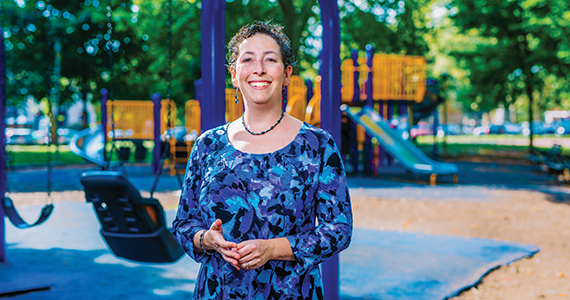Racing to Provide Early Intervention
Posted on
April 11, 2018

Much of Dr. Diana Robins’ work centers on refining a widely used screening tool for autism spectrum disorders she developed called the Modified Checklist for Autism in Toddlers, Revised, with Follow-Up (M-CHAT-R/F). The M-CHAT-R/F tool can alert caregivers that a child may be displaying early signs of autism spectrum behavior. It is known that children with autism spectrum disorders who receive earlier diagnosis and intervention have better outcomes. However, fewer than 20 percent of the nation’s pediatricians are following all of the early detection recommendations, which call for ongoing surveillance, broad screening at three ages, and ASD screening at 18 and 24 months. This creates a challenge for identifying children on the spectrum earlier so that they can take advantage of treatments while they’re young enough to benefit the most. Dr. Robins seeks to expand research on early detection to other community settings such as community health centers and preschools as well as to find ways to deliver interventions more quickly and efficiently to families after autism has been diagnosed. She is partnering locally, nationally and internationally with other universities to assess the complex screening and early detection needs of a range of communities.
The goal of her research program is to link early screening to early diagnosis, which will lead to earlier and more effective interventions.
“As a scientist, I have seen a lot of folks who focus on basic research, where the acquisition of knowledge is itself the end. For me, it’s always been a bigger picture of what to do with this knowledge to make the world a better place. When we see families struggling to find services, or struggling to get answers about their child, and what we know in the lab doesn’t translate, I feel like we haven’t done our job yet. You want science to have real impact. One of the gaps in the field is taking kids detected through screening and getting them right into treatment studies to show that there’s a connection. That package is what will really shift the standard that’s out there in the world,” says Dr. Diana Robins.